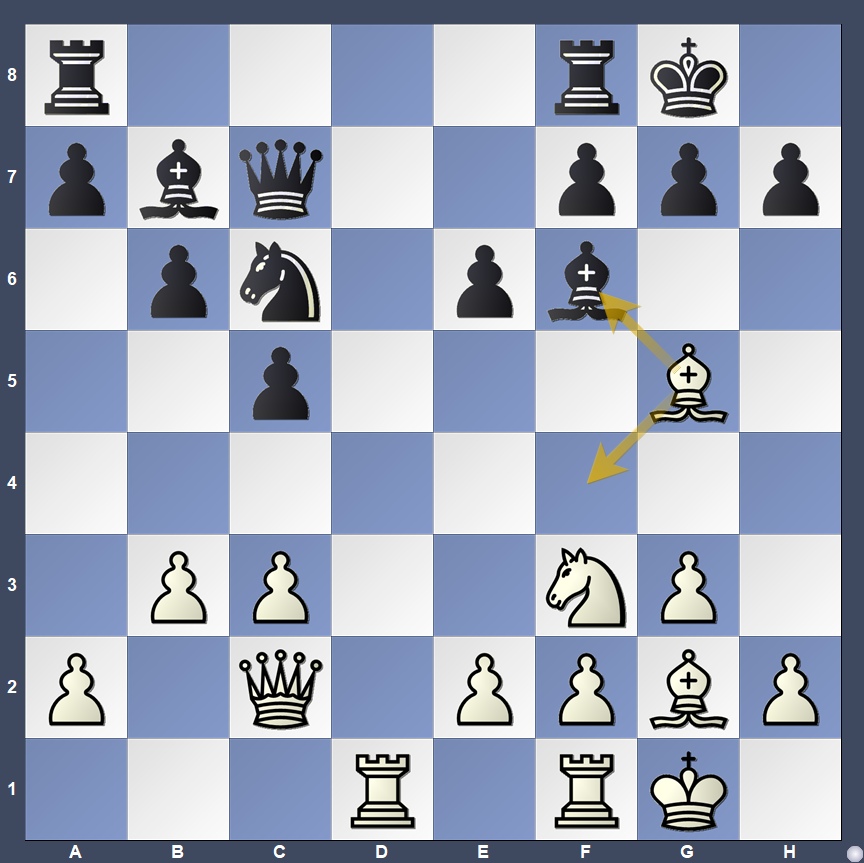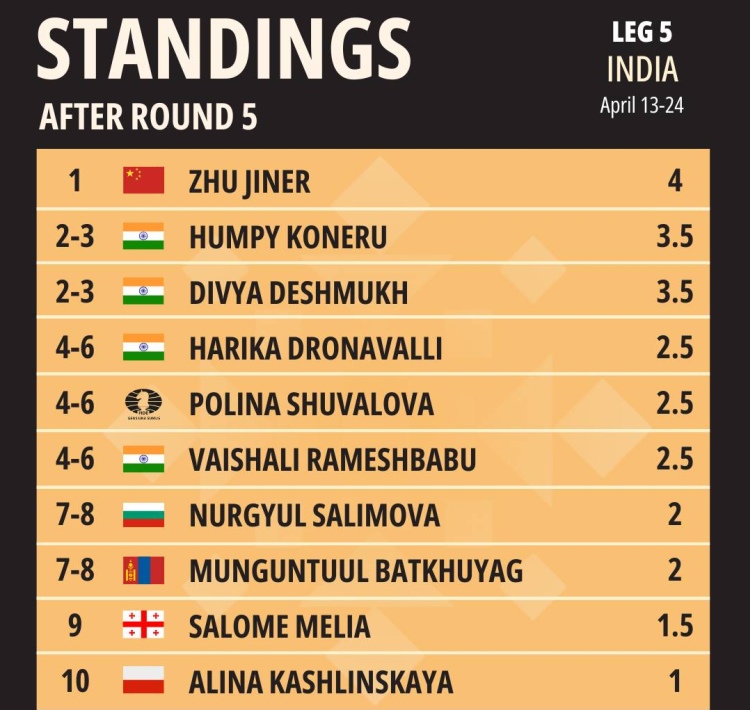
Going into the rest day, one would think that the players would keep it to the vest and play cautiously – no one wants to lose a game and ponder over it too much. But almost the opposite was true!
With the sole exception of the duel between friends and rivals Humpy and Harika, the other four games were heavily contested, to the point where we witnessed a fantastic positional queen sacrifice along with Vaishali’s first win.
For tomorrow’s free day, the organizers have planned a trip to the center of Pune for some sightseeing and souvenir hunting. Players, arbiters and media will get a chance to bond, at the same time recharging their batteries for the four final rounds, which will decide the winner of the Pune WGP.
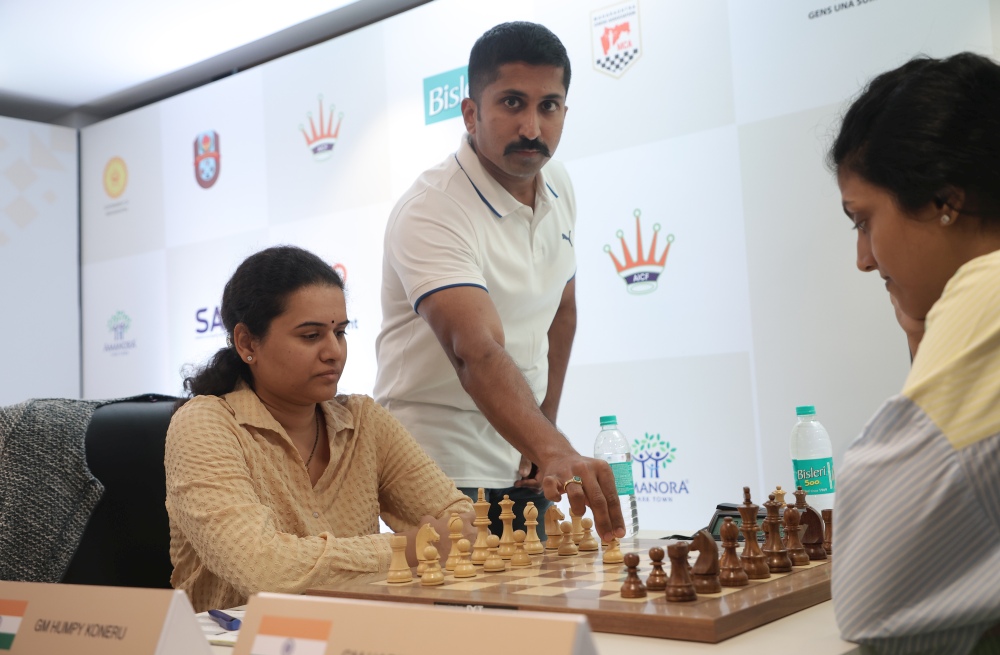
Today’s ceremonial first moves were performed on the Humpy vs Harika board. Mr. Shri Sridhar, Superintendent CID Pune opened the game for Humpy while GM Abhijit Kunte, gold winning captain of the 2024 Women’s Olympiad Team and the WGP Tournament Organizer, defended Harika’s black pieces.
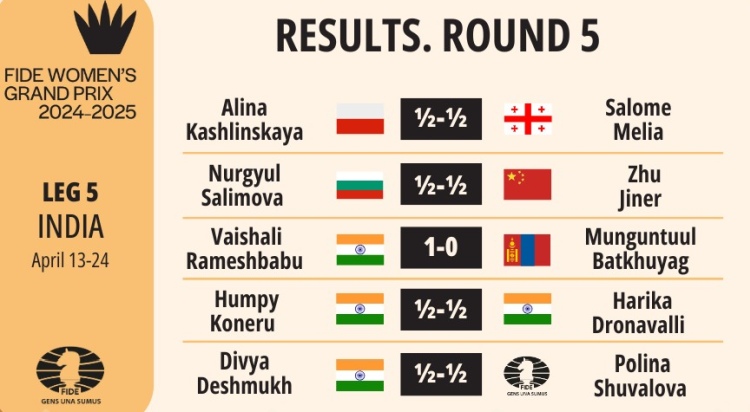
Let’s take a closer look at this afternoon’s games.
Humpy Koneru 0.5 – 0.5 Harika Dronavalli
The first game to finish this afternoon was the match between the two best Indian female players of all time, Humpy Koneru and Harika Dronavalli.

According to my database, their rivalry goes way back, to 2003. Since then they have played thirty games against each other, with a very close record – 3 wins a piece and 24 draws.
Humpy opened with a very solid Neo-Catalan declined, but failed to achieve any advantage in the opening. Both players completed their development comfortably and a draw was agreed on move nineteen after a threefold move repetition.
It could be argued that Humpy could have played on in the final position with 19.Bxf6, weakening Harika’s castled king, but maybe going into the rest day she preferred to play it safe.
Alina Kashlinskaya 0.5 – 0.5 Salome Melia
Soon afterwards, Kashlinskaya and Melia, currently occupying the bottom two spots in the standings, also agreed to a draw, albeit after many more moves.
The Polish number one decided to try out the solid Alapin variation against her opponent’s Sicilian Defence. However, after a few moves it already seemed that she was out of the book, spending ten minutes for 7.dxc5 and then a further thirteen minutes for 9.h3.
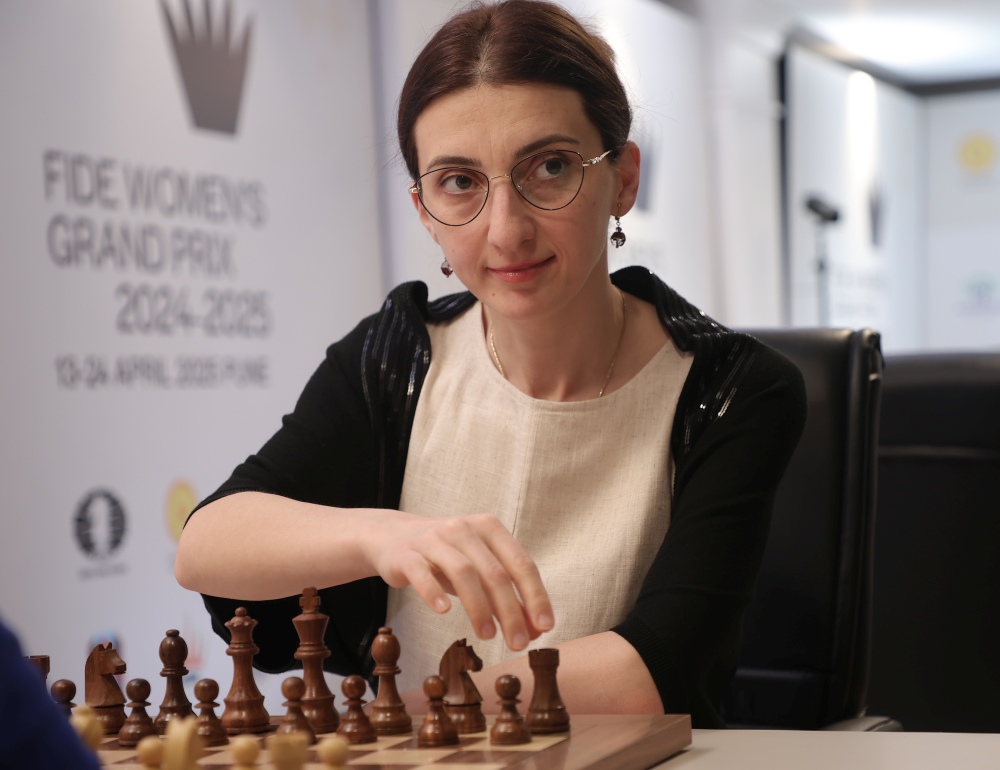
With the queen’s off the board, it all fell down to Kashlinskaya’s endgame technique – would she be able to squeeze water from a stone in an opposite-coloured bishop with two rooks?
She continued to push, and even sacrificed a pawn to get an outside passer, but Salome was able to hold the balance at all time and the engine confirmed equality.
A draw was eventually agreed on move forty-one, with both players clocking-in a 98% accuracy score.
Divya Deshmukh 0.5 – 0.5 Polina Shuvalova
A very equal game all along. Divya prepared a twist in the exchange variation of the Queen’s Gambit that definitely caught Shuvalova off-guard. The move 8.Ng-e2, instead of the more common 8.Qf3, forced Shuvalova into the tank for more than seventeen minutes.
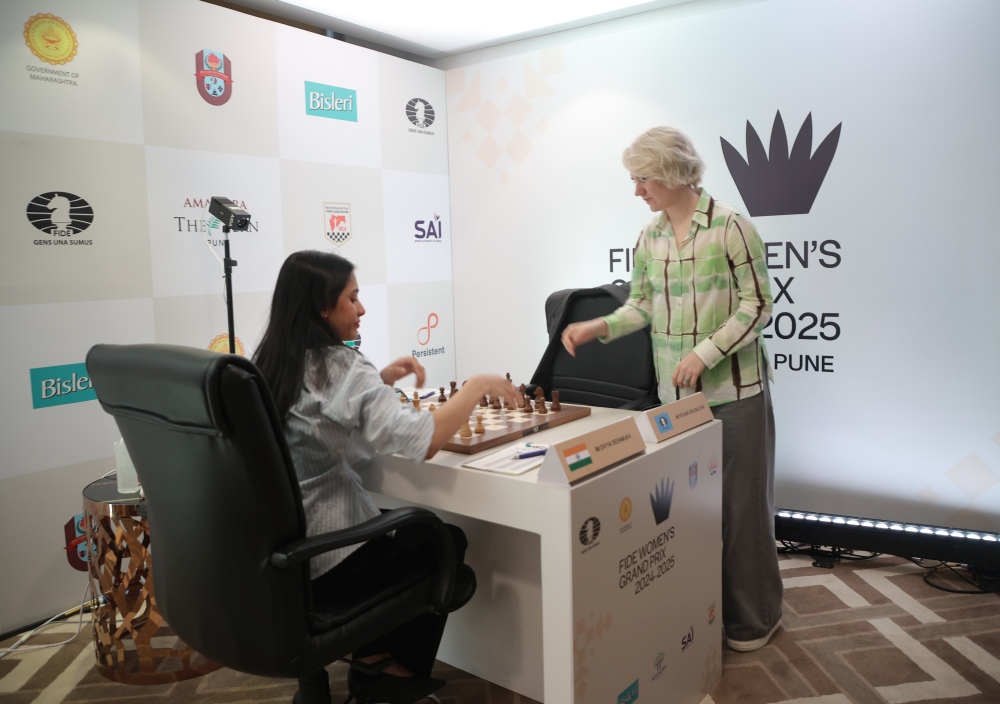
Polina eventually found the correct defence but Divya pressed on for most of the game, working her way towards the only weakness in Shuvalova’s position – the pawn on b7.
But Polina was on point today and defended accurately, simplifying into a totally drawn theoretical rook and pawn endgame. The game indeed ended in a draw, with both players performing above 98% accuracy!
Vaishali Rameshbabu 1 – 0 Munguntuul Batkhuyag
An important win for Vaishali, that leaves her on 50% going into the rest day. She opened the game with the Reti 1. Nf3 + 2. g3 followed by an early exchange of queens.
Very solid but with hardly any aggression – Munguntuul equalised comfortably and one could even argue that Black had the upper hand.

Additionally, on move twenty-five Munguntuul had twenty-five minutes left while Vaishali was already under her final ten minutes. Up to this point both players were being very accurate (around 98%), and according to the engine the position remained in balance but at the same time extremely dynamic.
Vaishali finally decided to go for an attack, and the risk reaped the reward. After several inaccuracies, the Indian IM took advantage of her opponent’s final mistakes and won the game.
She was also kind enough to join us in the media center to go over her game on the screen, and talk about her performance in the tournament.
Nurgyul Salimova 0.5 – 0.5 Zhu Jiner
If Zhu Jiner ends up winning this tournament, it will be largely because she saved her game today by the skin of the teeth.
In a fashionable London opening, Zhu was obtained the bishop pair in exchange for a slight kingside pawn weakness. Both players made some small positional inaccuracies in the early middlegame, but eventually the position evened out, and a draw was looking to be the most likely outcome.
After some more exchanges and manoeuvres, Salimova was even proposing some move repetitions, while Zhu Jiner was avoiding them at all costs: she wanted the game to carry on, probably counting on some mistakes in Salimova’s time trouble.
And then this happened!
Moment of the day
Zhu Jiner could have just exchanged rooks and the game would have headed to a draw. But instead she played 44…Nd5? And got hit by a fabulous queen sacrifice. Salimova played 45.Qxd5! exd5 46.Rxc7 with a massive positional advantage for the material.
The game eventually ended in a draw when Salimova missed a couple of wins. We were lucky to catch her leaving the playing hall and convinced her to pop into the media center and see where she had missed the win.
Round 6 dates and pairings
The players will enjoy a rest day tomorrow. The sixth round of the fifth leg in the 2024/25 Women’s Grand Prix series will take place on Sunday, April 20 at 15:00 CET local time in Pune, India.
Round 6 pairings:
Salome Melia–Polina Shuvalova
Harika Dronavalli – Divya Deshmukh
Munguntuul Batkhuyag – HumpyKoneru
Zhu Jiner – Vaishali Rameshbabu
AlinaKashlinskaya – NurgyulSalimova
More information about the event, including the regulations and details of the pairings, as well as live games can be found on the official website.
You can follow the games with expert commentary on FIDE’s YouTube channel.
Written by IM Michael Rahal
Photos: Abhilash Shinde



